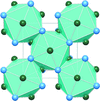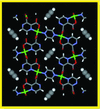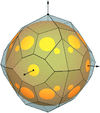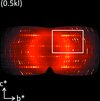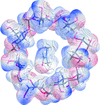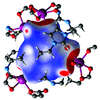issue contents
June 2014 issue
Special issue on Non-ambient Crystallography
Guest Editors: David G. Billing and Andrzej Katrusiak

Cover illustration: Isothermal and isochoric crystallization can be used for growing high-quality single crystals of compounds which are liquids or unstable at normal conditions. The cover illustrates the differences in melting and boiling points of dibromobenzene isomers (top) and shows a single crystal of highly hygroscopic pyridine N-oxide (bottom), with a chip of ruby on its side used for pressure calibration, all inside the chamber of a diamond-anvil cell. For details see Patyk et al. [(2014), Acta Cryst. B70, 487-491] and Dziubek & Katrusiak [(2014), Acta Cryst. B70, 492-497].
editorial

scientific commentaries
feature articles
 access
accessnon-ambient crystallography
















research papers








β-Cyclodextrin dimethylformamide 12.5 hydrate: a deeper insight into β-cyclodextrin crystal packing




A series of linear alkaline earth coordination polymers incorporating diphenylphosphinate ligands are reported. The compounds have been characterized by single-crystal X-ray diffraction and 1H NMR and FT–IR spectroscopy.


 journal menu
journal menu









